The show is open from Tuesday to Saturday 11am - 6pm until May 20th
No reservations needed. Come at your convenience
LUX EX MACHINA
“The things that that happen when I tune into the light; alive to the very specific, vibrational tone of that day, what emerges are forms that express its character.”
Aigana Gali
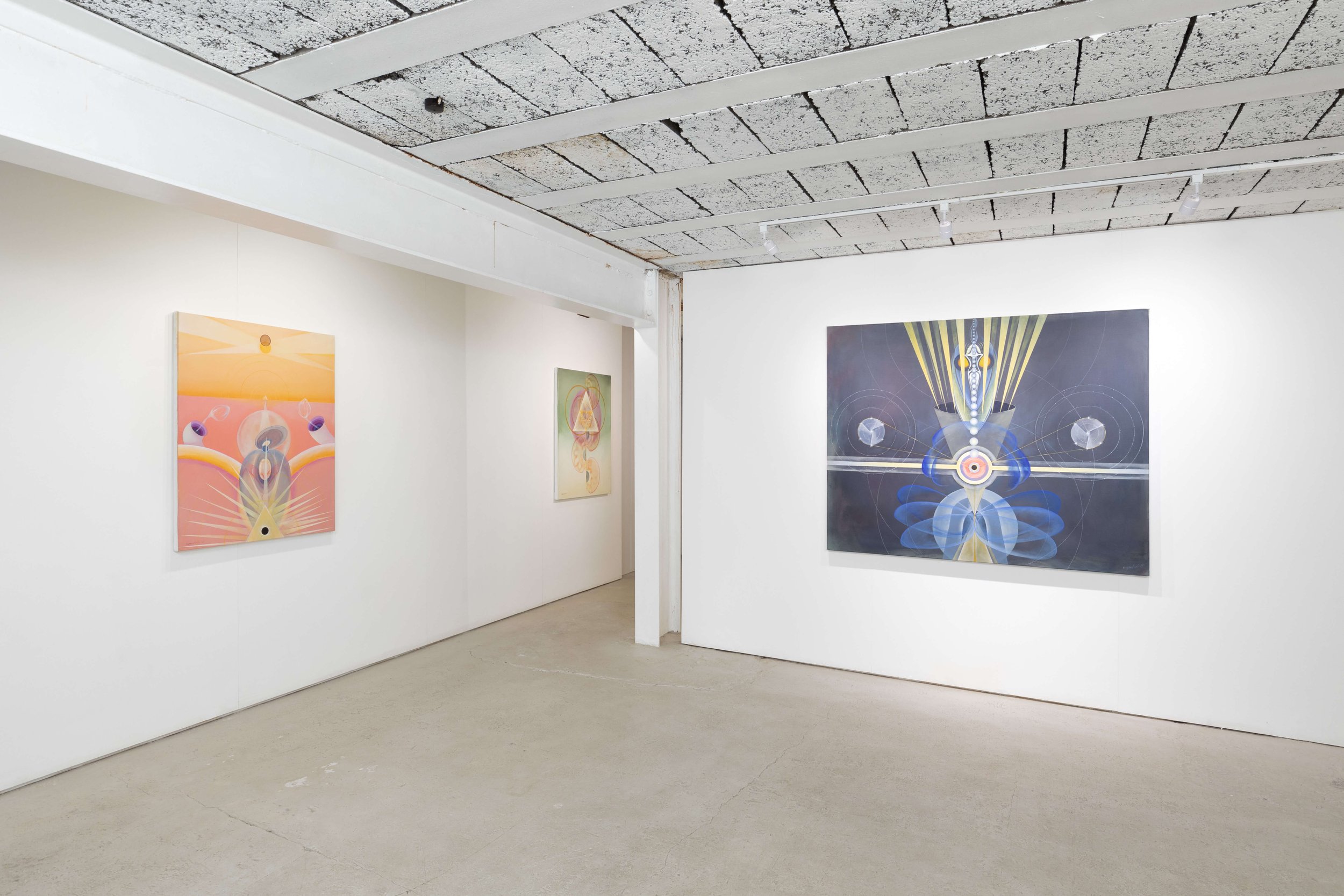
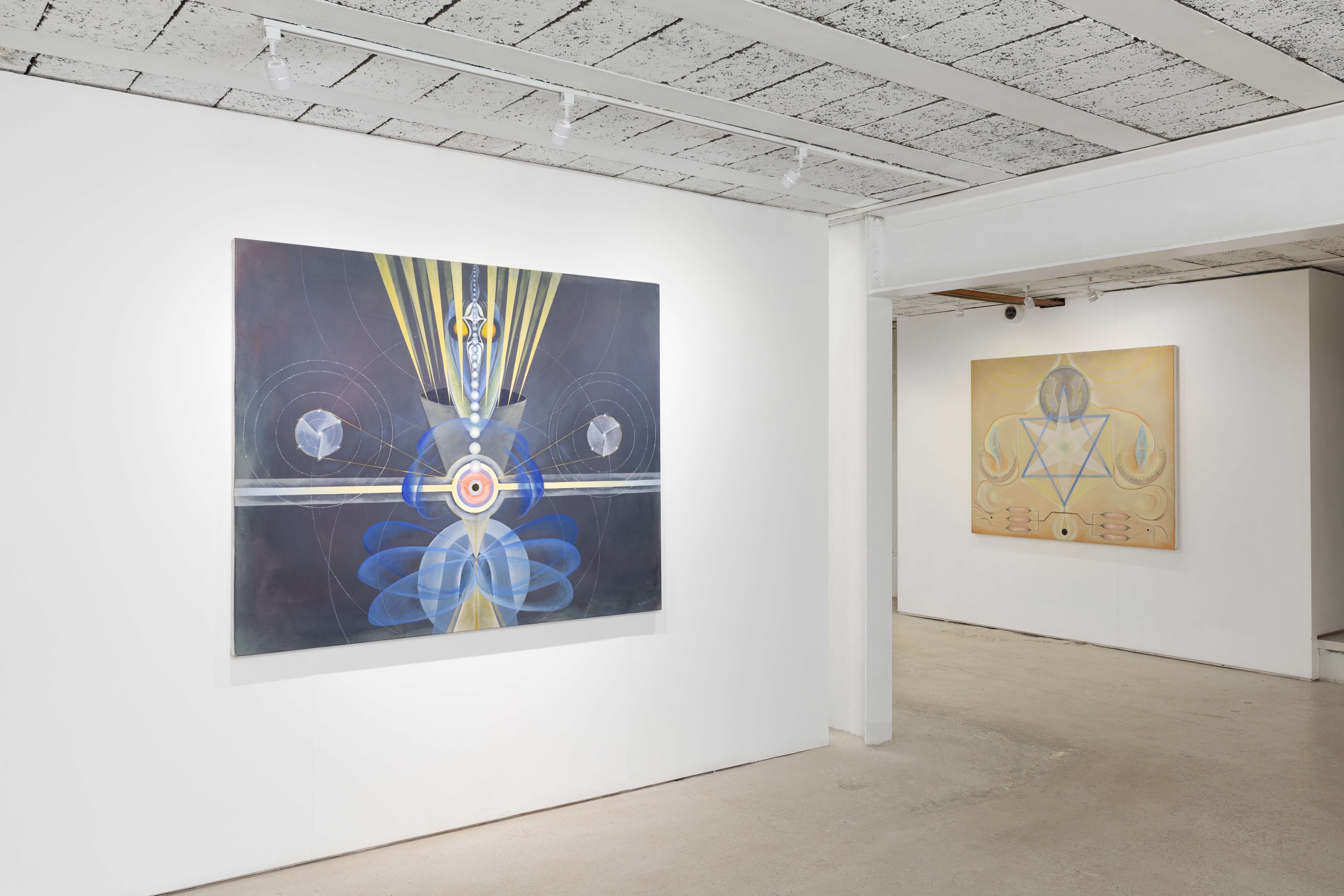
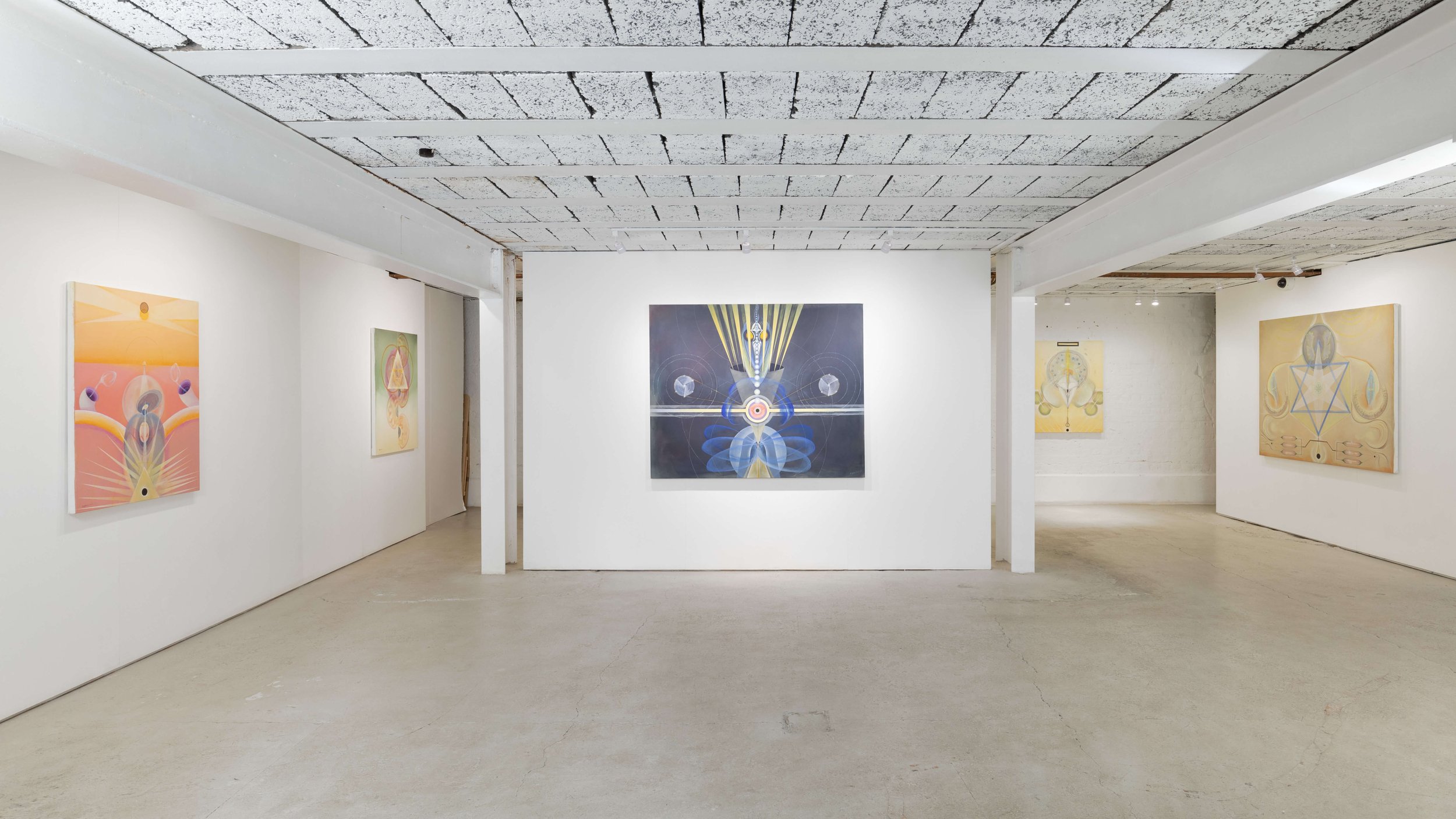
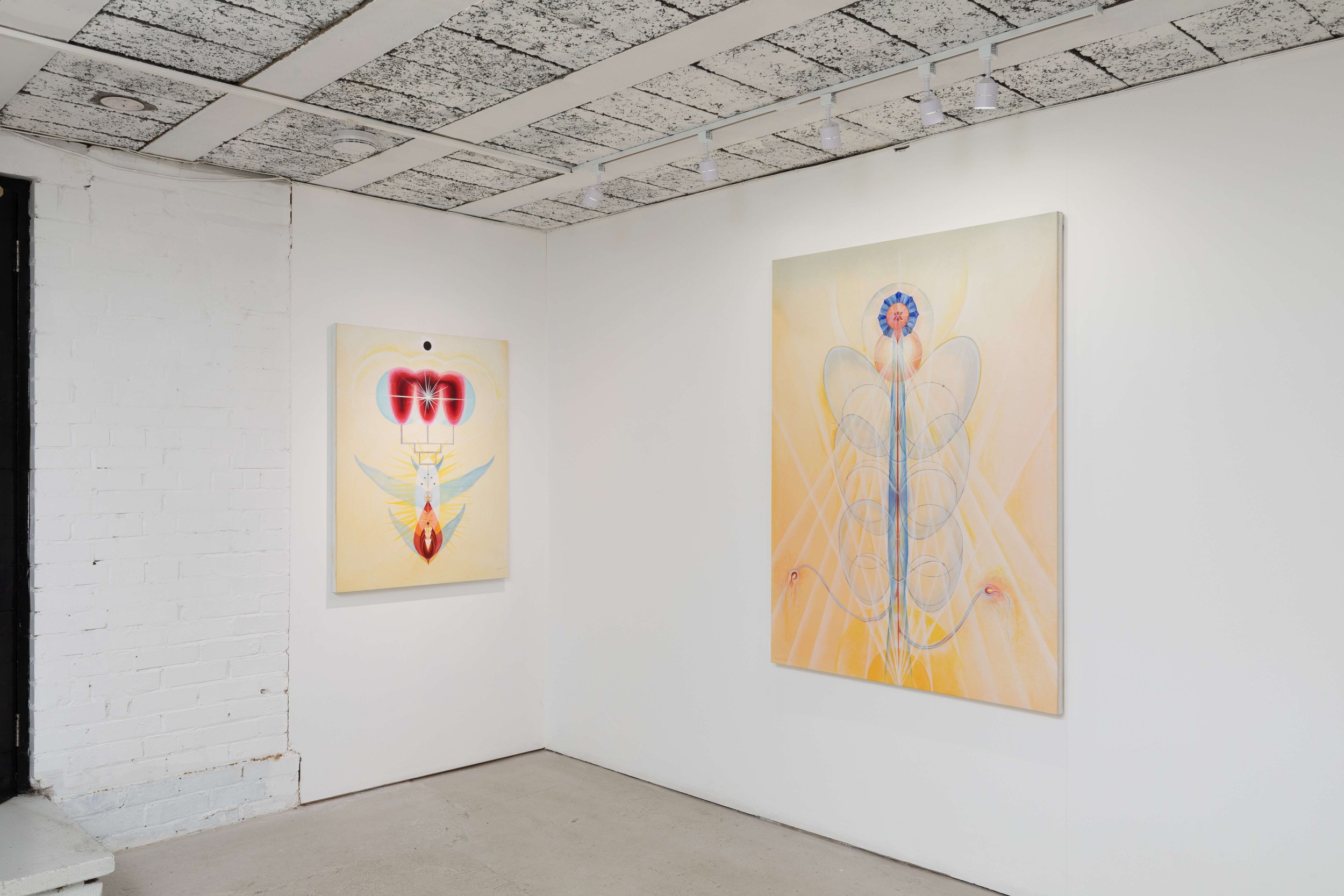
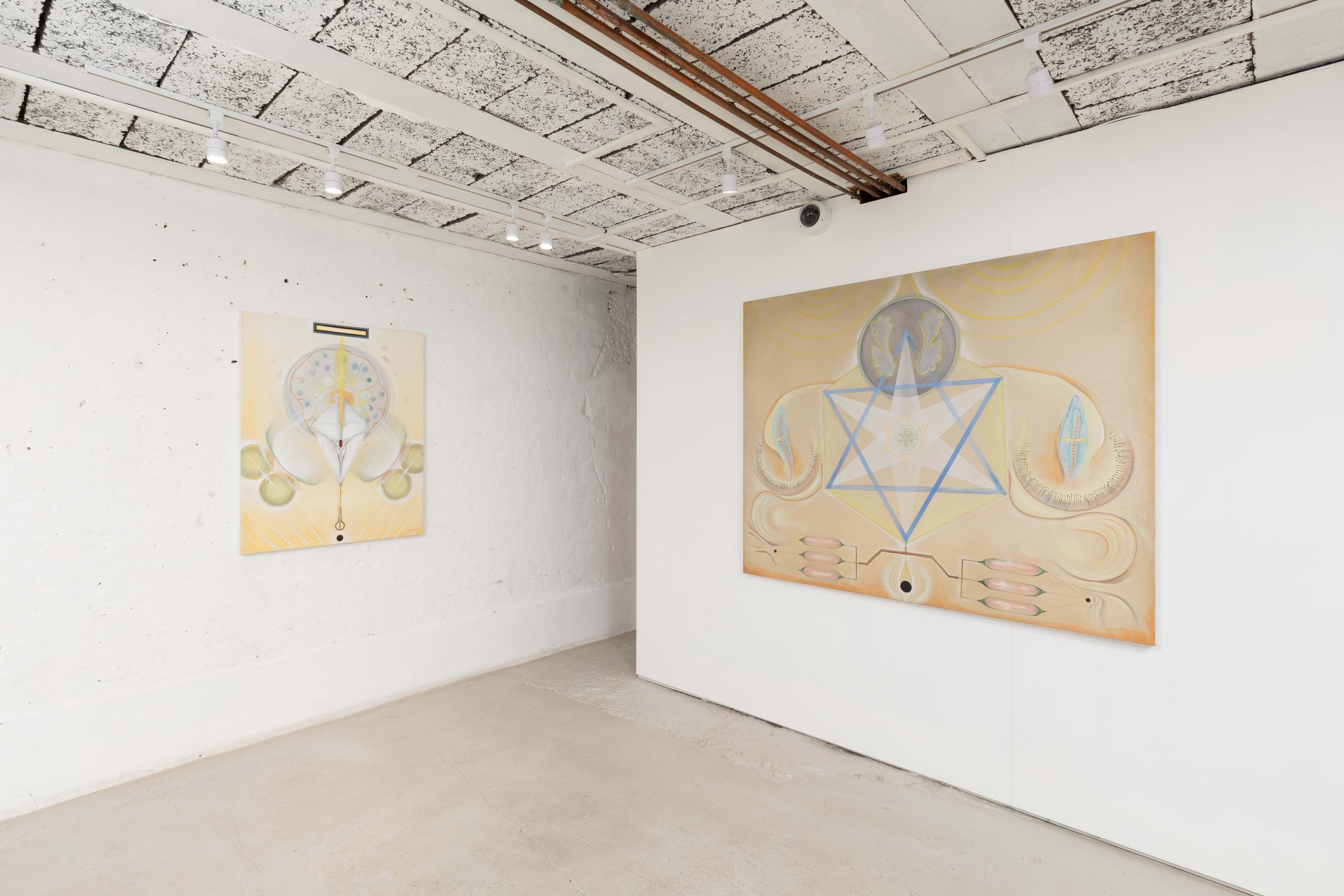
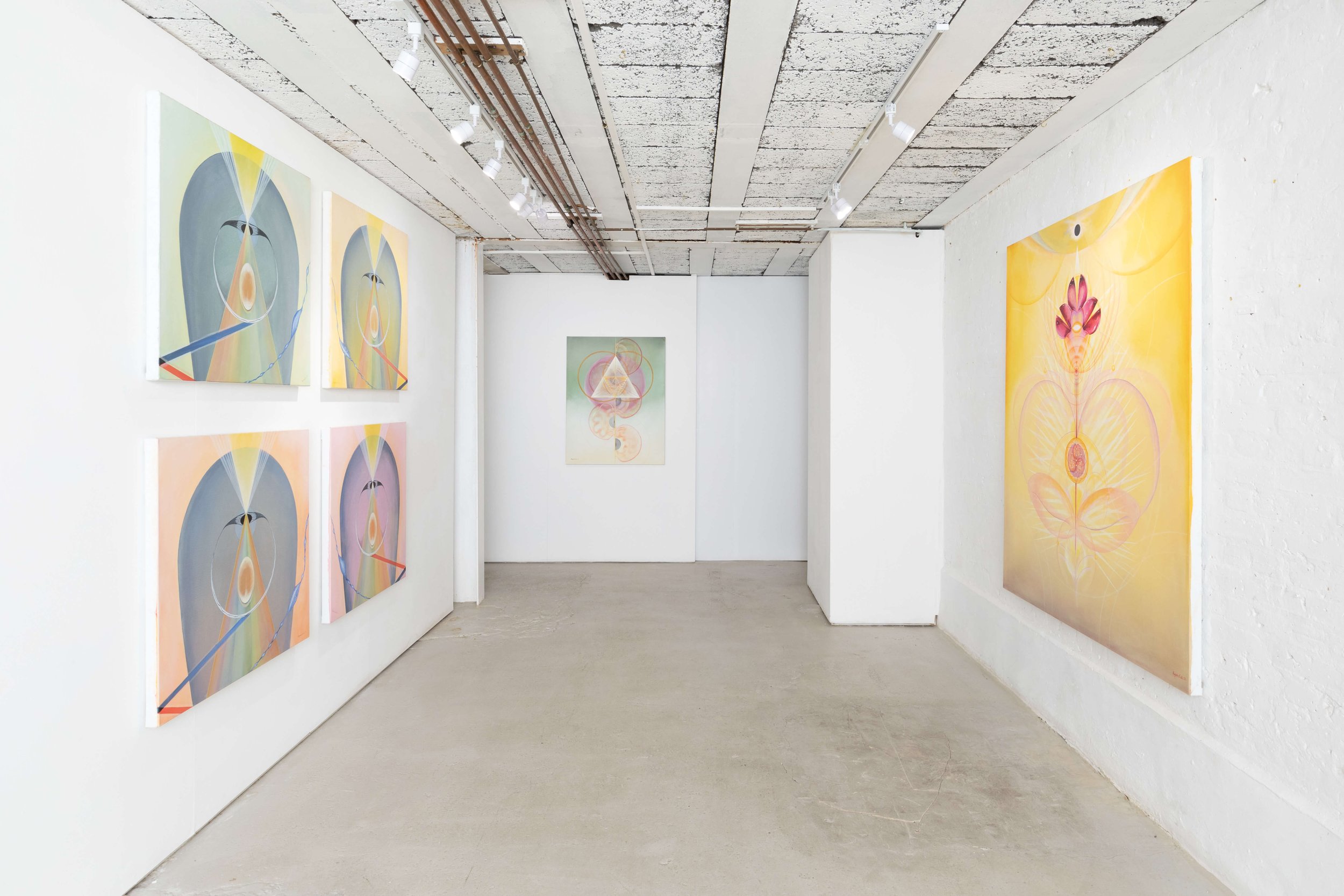
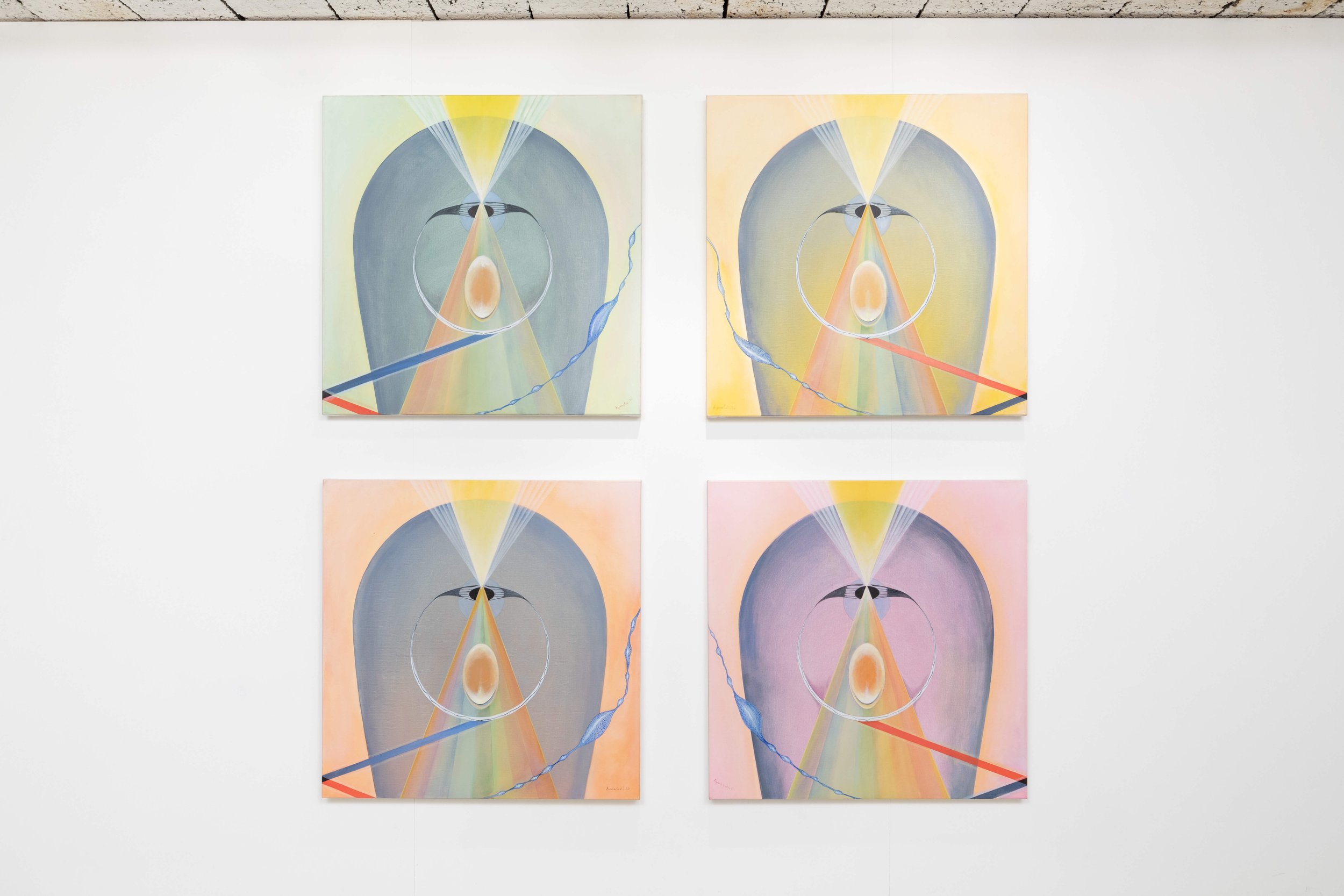
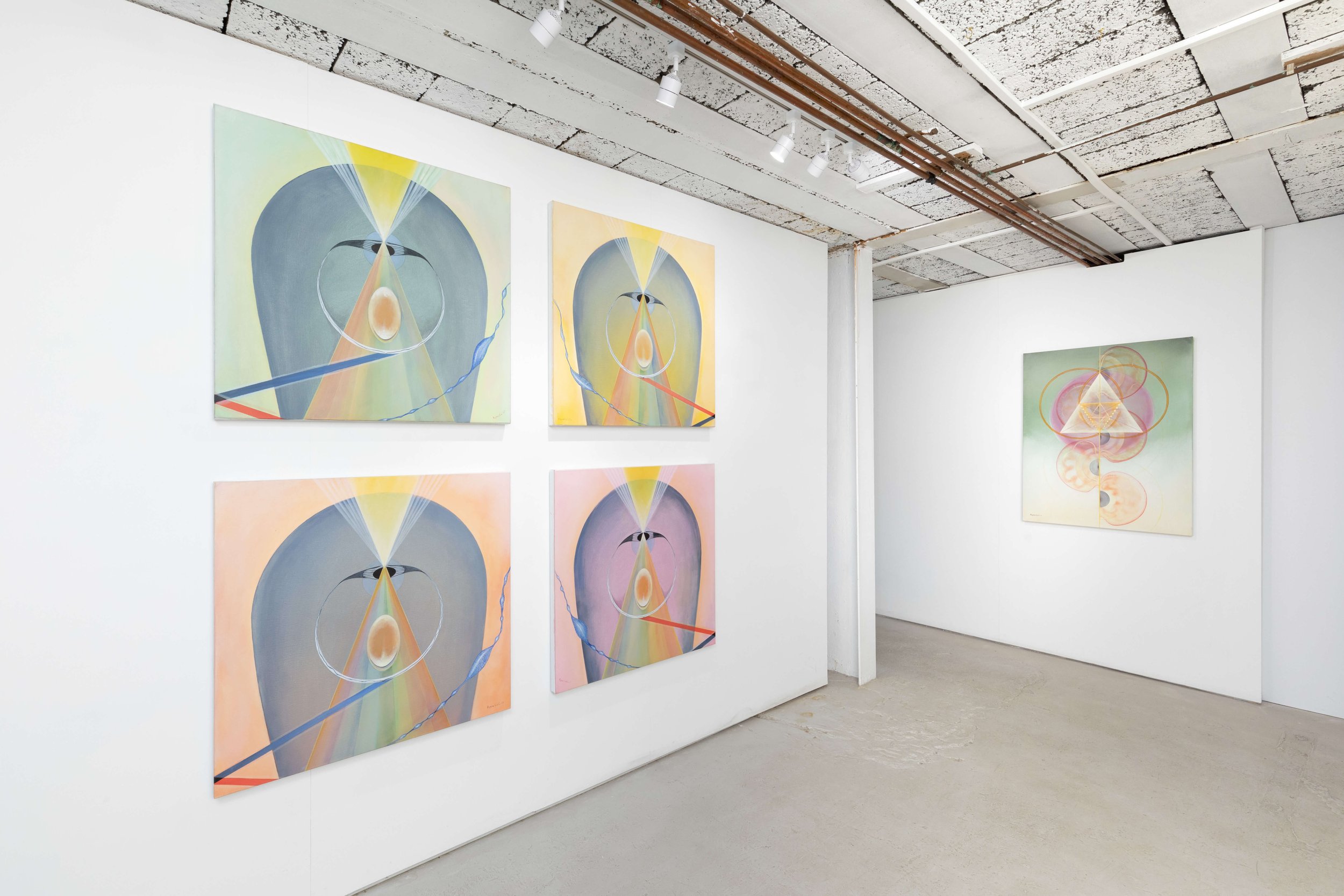
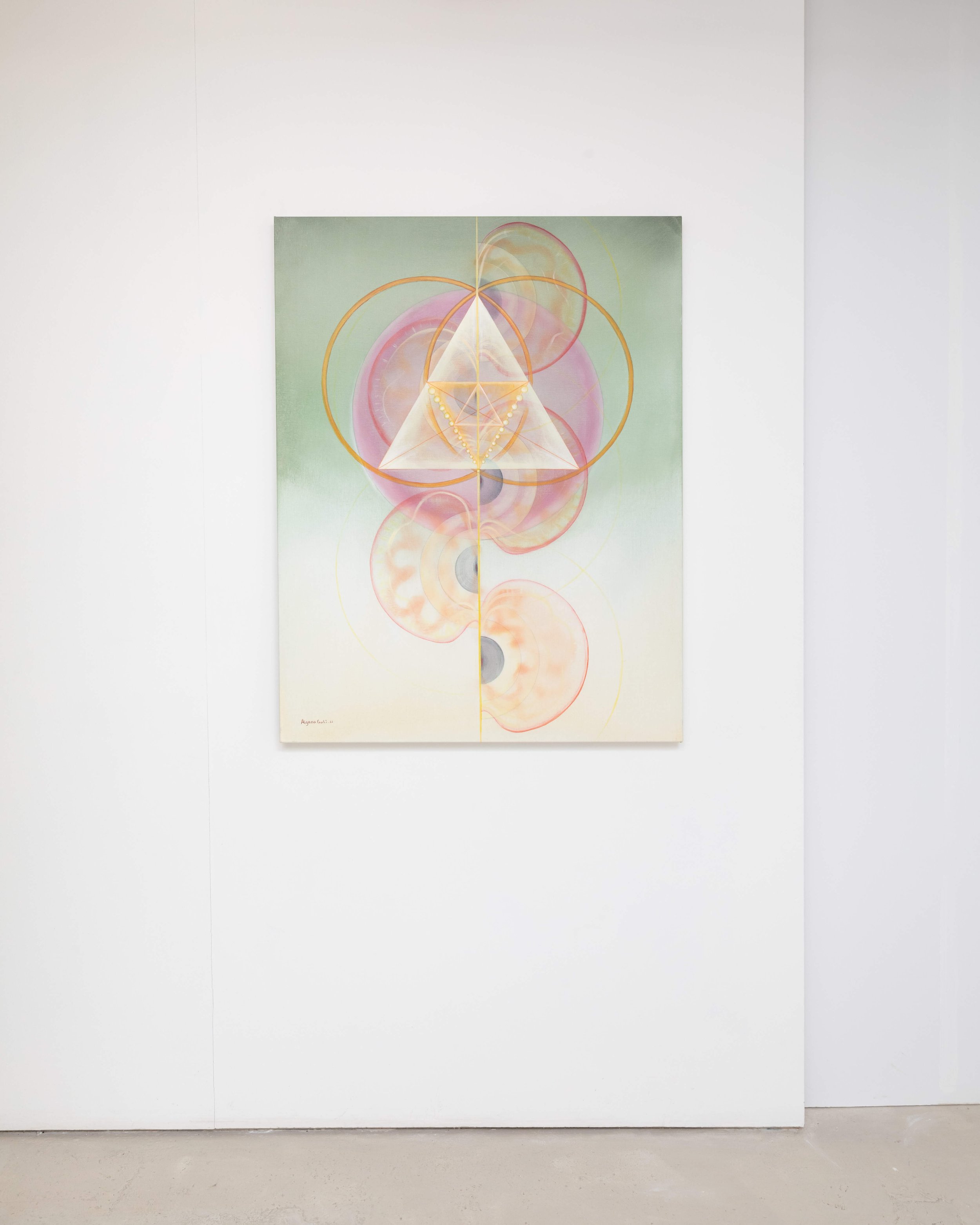
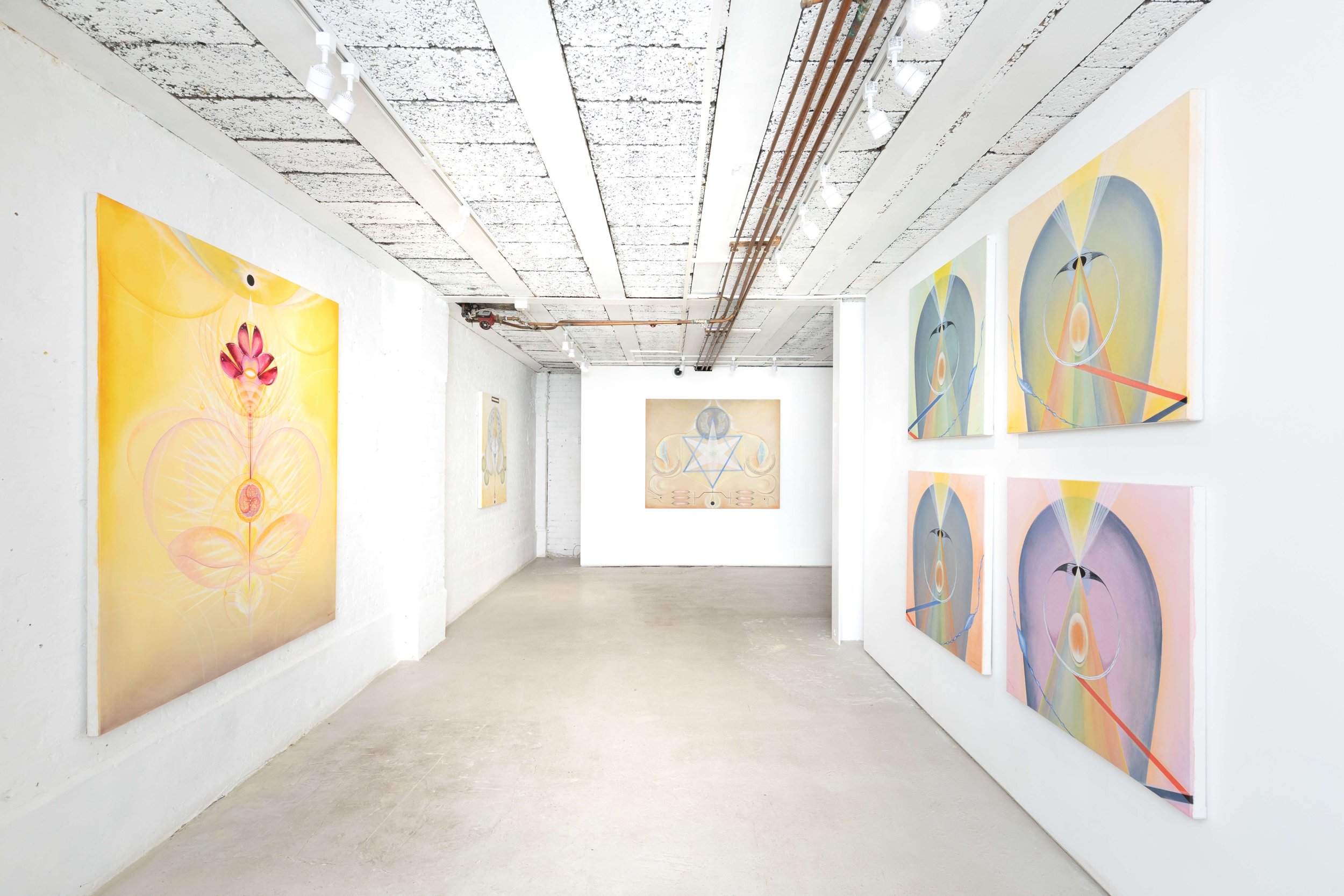
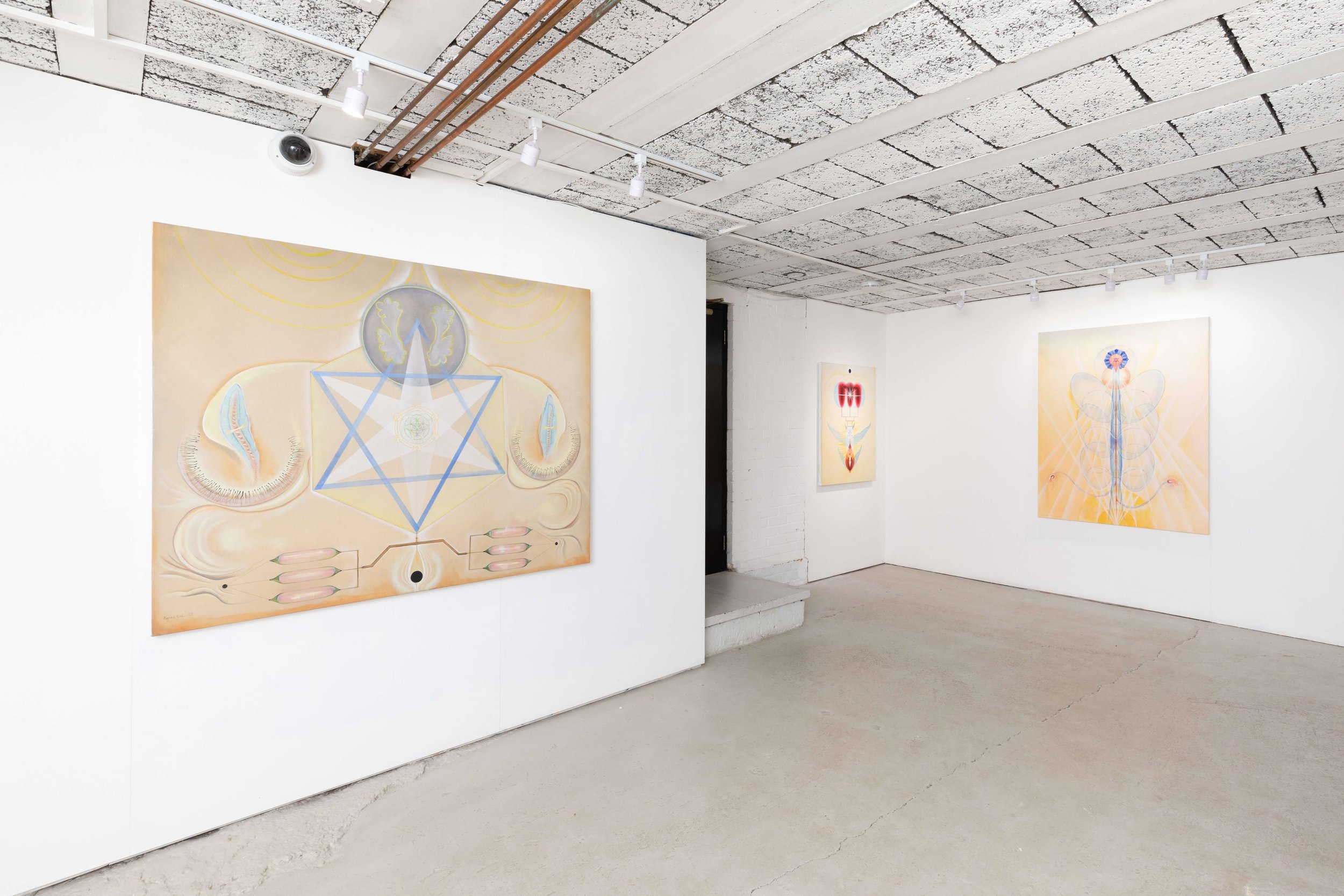
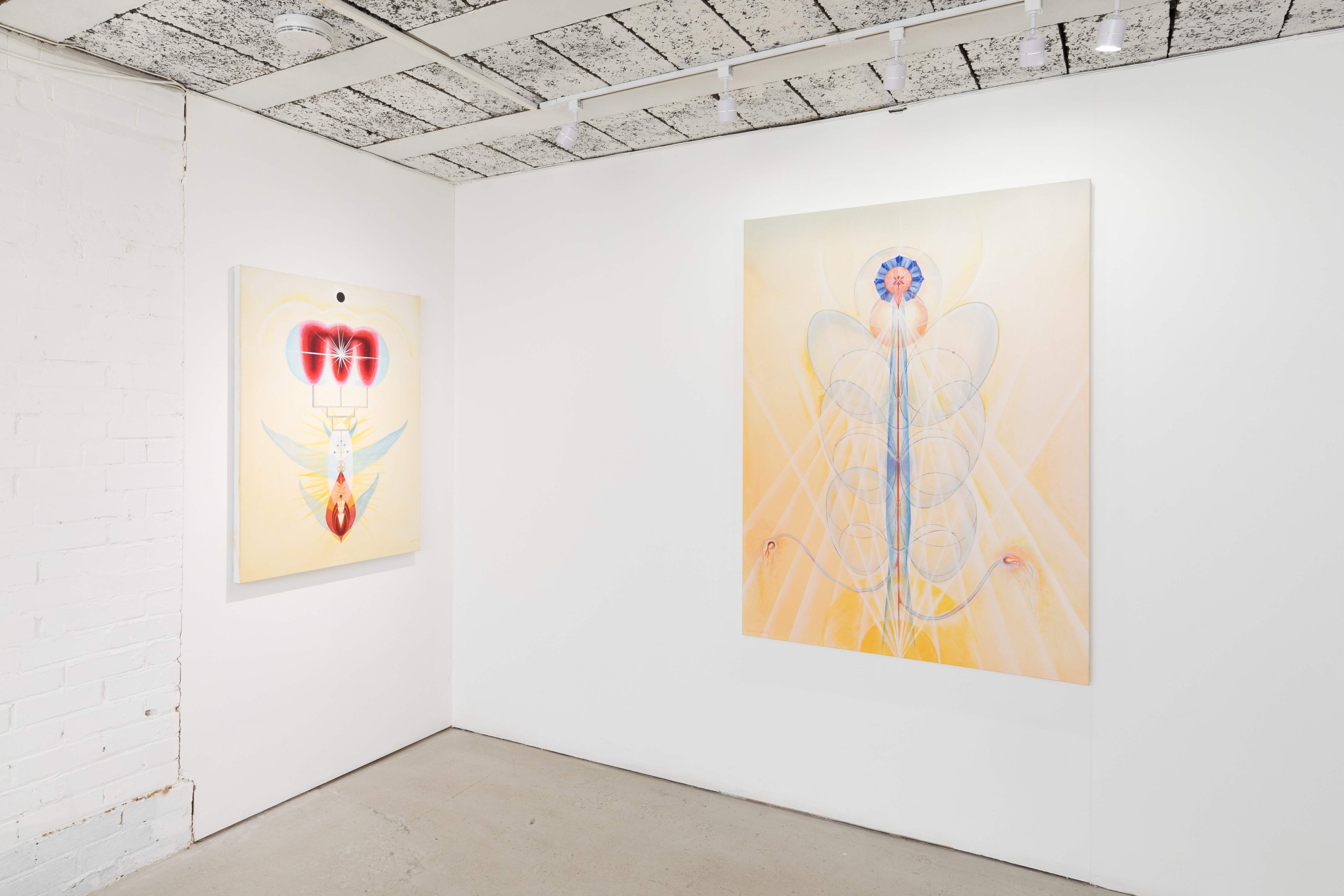
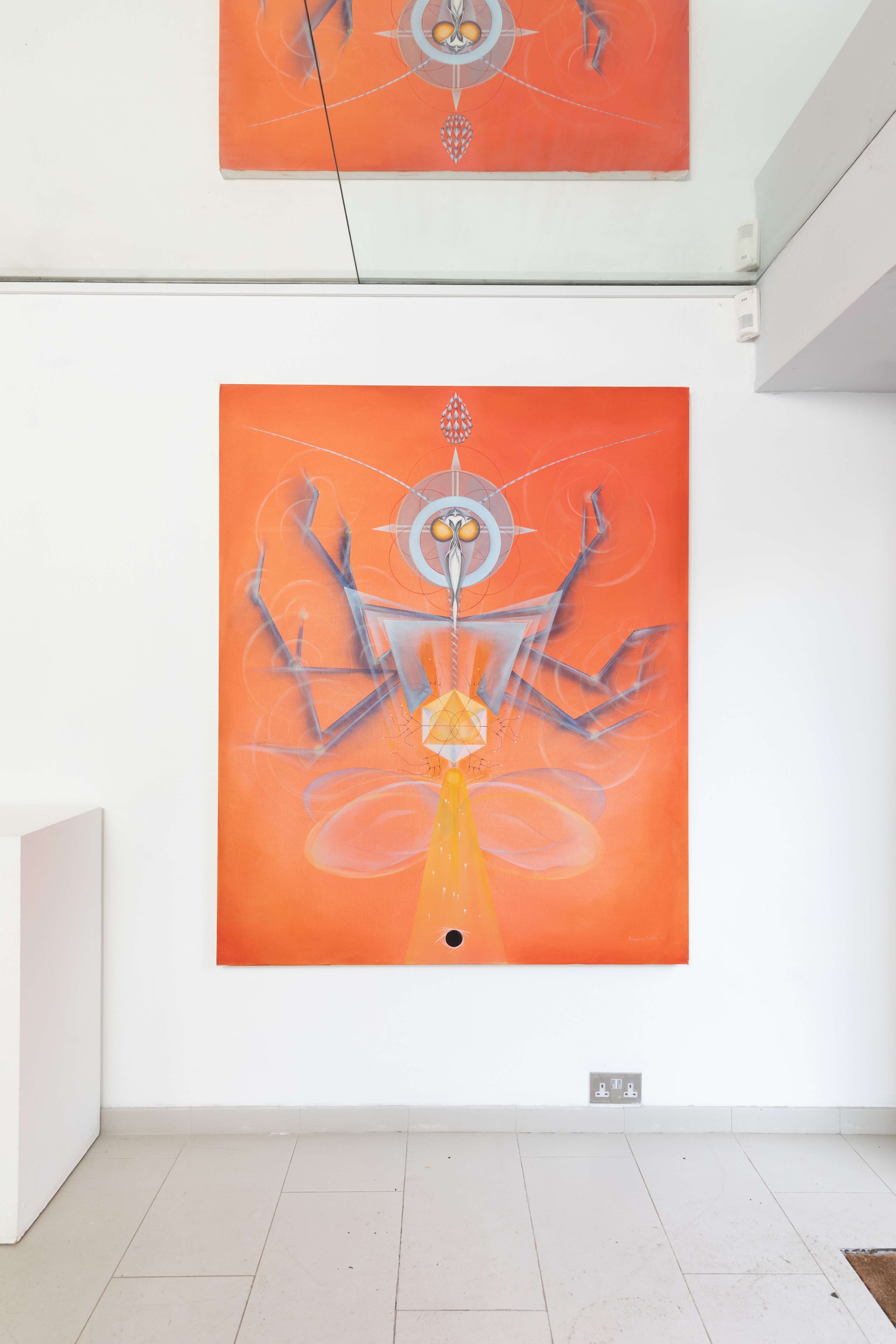
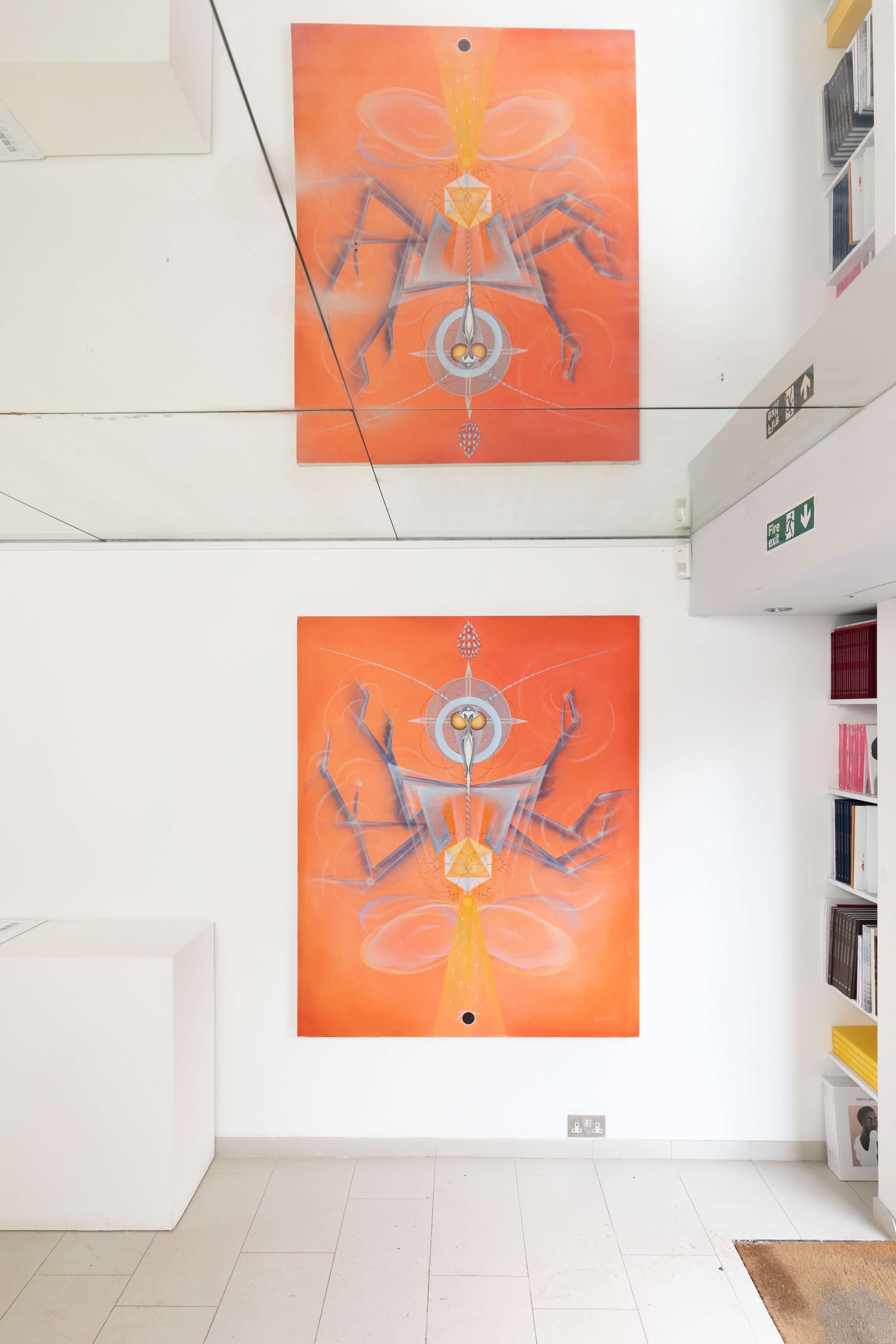
The exhibition’s title comes from the theatrical term deus ex machina, which was first used in ancient Roman and Greek drama to indicate the timely appearance of a god who would unravel and resolve the plot. Here, deus (God) becomes lux in reference to the various light sources that appear in the paintings – luminous orbs, pulsing electric currents, wide yellow beams – but also to the process of making the work. Gali has painted from a very young age but while her previous series, such as Steppe or Tengri, reflected interior states and personal experiences, these latest paintings exist outside of the artist – they are a product of the light or perhaps a spiritual realm that is beyond our ordinary perception. Gali sees herself as a conduit who is being guided by a higher force, but to enter into this state requires physical and mental discipline as well as a sense of ritual. She must arrive at the studio with ‘an empty head’ and to give herself over completely to the process so that the work can flow through her and evolve on its own terms. ‘It feels almost like I am making photographic work, developing images in a dark room where I can only ever see one step ahead,’ she says.
Shankobyz
Though Gali does not adhere to any specific spiritual belief systems, her works bear some resemblances to those of Hilma af Klint or Agnes Pelton whose paintings similarly balanced biomorphic and geometric forms and displayed an inventive use of colour. Like af Klint, Gali believes these latest works to be ‘like messages for humanity or explanations to certain processes’ which she herself is still unable to fully comprehend. In them, we find organic forms, evoking soft, womb-like spaces alongside mechanical looking structures with metallic rods and wires, seemingly conducting light, electricity or even flames. Some of the forms travel between the works, such as the black disc that appears in several paintings including KOSYN and SHANKOBYZ, at times resembling the pupil of an eye and at others a portal to or from another world. Elsewhere, a membrane-like surface, as seen in Ornek or Yurt serves as a kind of cocoon or amniotic sac for nascent forms while planetary-like symbols (moons?) in Khan Tengri and rigid diagrammatic structures seem to hint towards different sources of energy and evolution.
Kosyn
For Gali, however, it is less about the individual shapes than the complex and often bilateral patterns that emerge from their positioning on the canvas and what these might indicate – channels of energy, mystical or healing formulas, biological codes, blueprints for new worlds or ways of living. Each work bears a Kazakh title as both a nod to the artist’s heritage and a way of distancing the paintings from the everyday language that is used by her largely European or English-speaking audience to classify (and confine) the world around them. Without being able to understand their meaning, the words become another kind of visual code, an invitation to step out of the familiar and into the unknown.
Yurt
Meditator IV
It is this sense of mystery combined with the intensity of colour and form that makes these works so compelling. Though we might not immediately, or ever fully, understand the messages that they convey, we can feel the life force that radiates from the surface and in that is an expansive sense of possibility and freedom. To even entertain the idea that there is something else out there, beyond our perception, is to expand the ways we think about our bodies, societies and nature.
View the full exhibition at the Kristin Hjellegjerde Gallery
The show is open from Tuesday to Saturday 11am - 6pm until May 20th
No reservations needed. Come at your convenience




